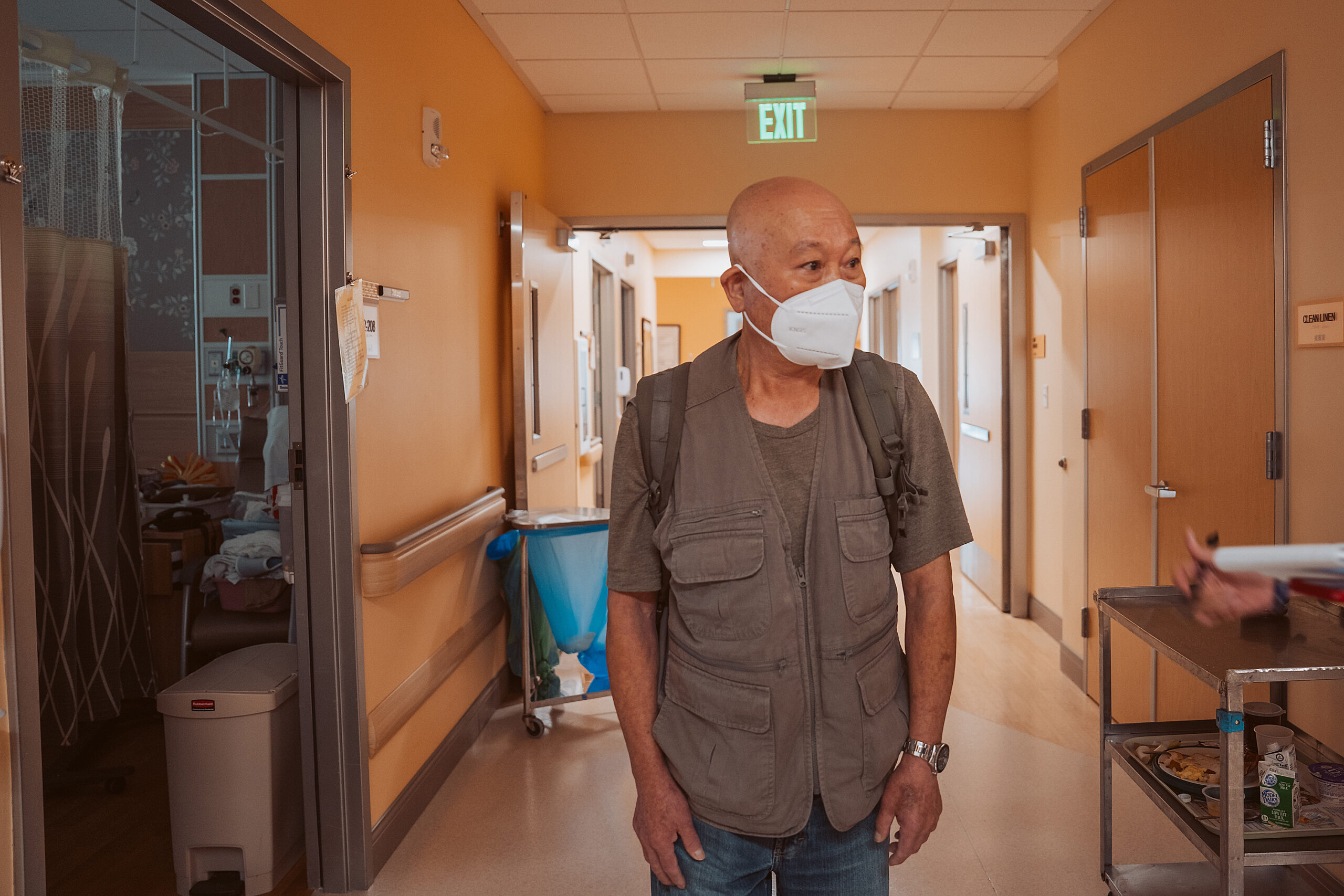Ru Sen Zhao often spent hours on public transit, with multiple transfers, just to travel from San Francisco Chinatown to a Daly City hospital to take care of his paralyzed son.
The long commute while juggling a job at a printing company made life extremely challenging for the 75-year-old monolingual Chinese immigrant.
“If my son can stay in Chinatown,” Zhao said, “I can just walk to see him.”
Since suffering from a stroke seven years ago, Zhao’s son has cycled in and out of different hospitals in San Francisco and now needs what’s known as sub-acute care, which is what the California Department of Health Care Services defines as “comprehensive inpatient care designed for someone who has an acute illness, injury or exacerbation of a disease process.”
However, in San Francisco’s public healthcare system, there are zero such inpatient beds—not to mention any at a place offering the kind of culturally competent service the Zhao family says it needs. The younger Zhao had no choice but to go to Seton Hospital in Daly City, the closest sub-acute facility available.
St. Luke’s Hospital used to have some sub-acute beds, but the unit that housed them was eliminated years ago. Nationwide, many facilities have done the same because of the high costs, low reimbursement rates and complicated regulations that make it difficult to run such wards.
Despite the challenges, San Francisco’s historic Chinese Hospital is trying to fill the gap in the city’s sub-acute care.
Jian Zhang, the CEO of the century-old Chinatown healthcare facility, said her team has been developing a sub-acute care unit—but the process hasn’t been easy.
“We have some difficulties,” she acknowledged, “so we are working with the city to fix that.”
On Wednesday morning, Zhao, other hospital leaders and San Francisco Supervisor Gordon Mar toured the second floor of the Chinese Hospital, where they hope to see a 23-bed wing converted into the kind of sub-acute-care unit that could take in Zhao’s son.
Zhang said the hospital is trying to create a bigger kitchen and purchase more equipment to meet the state and federal requirements to get the appropriate license and certification. But she expects the process to take at least a year or so.
Mar described the need for the care beds as “really urgently important”—especially since the city’s long-term care facility, Laguna Honda Hospital, faces closure and the imminent order to transfer hundreds of patients elsewhere.
“It’s been quite a scary situation,” Mar said. “We as a city really thank the Chinese Hospital for taking this important step.”
The San Francisco Department of Public Health confirms that there are no sub-acute care beds or units in the city’s public health system. The California Pacific Medical Center Davies campus at Castro and Duboce streets has nine sub-acute inpatient beds, but those are for their own patients—not the ones who rely on the public healthcare system.
For Zhao, his only wish is to be close to his son—close enough to make visiting him a part of his daily routine.
“I am getting older and older,” Zhao said, “and (if my son) can stay in the Chinese Hospital, that would be great for the family.”
